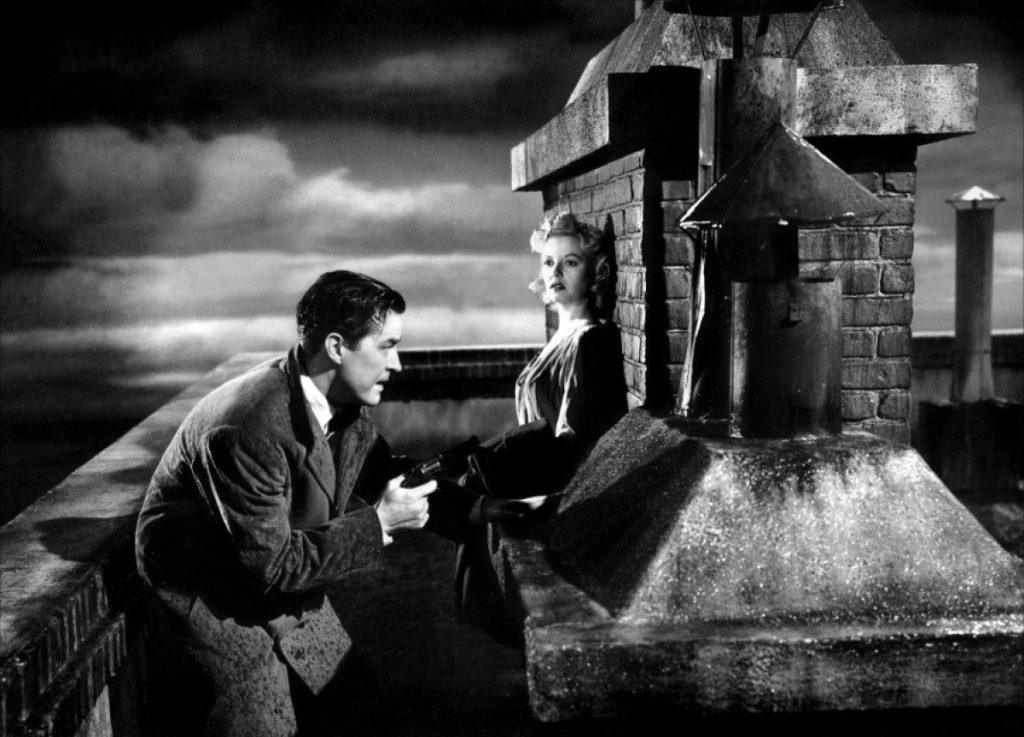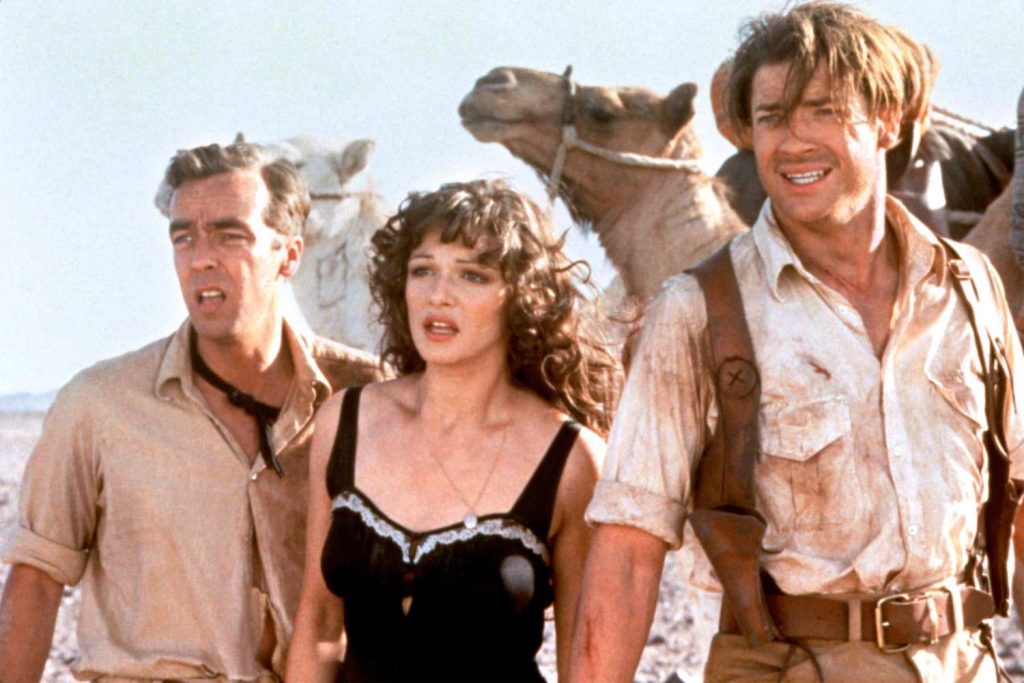In the Shadow of the Guillotine. The Murderous Corpse. The False Magistrate. The titles are as macabre as the masked madman that appears in them. From the publication of his first adventure in February 1911, the character of Fantômas seemed tailor-made for the movies. A master of disguise and evil genius capable of pulling off all manner of diabolical deeds, Fantômas was the creation of French writers Pierre Souvestre and Marcel Allain. Working by alternating chapters, they turned out Fantômas books at the rate of one a month, meaning 27 were on the stands by the time Louis Feuillade’s adaptation of the first was released in May 1913. Souvestre and Allain kept up the pace until that September and the publication of the 32nd volume, La fin de Fantômas (“The End of Fantômas”), with Allain reviving the character in serialized form twelve years later – thanks in part to the continued popularity of the five Fantômas films Feuillade made in 1913-14.
Feuillade’s films greatly condensed each of the novels in the series they tackled. In fact, In the Shadow of the Guillotine is so streamlined it doesn’t even bother with the first half of its source novel, Feuillade taking as read that he could cherry-pick which parts to dramatize and the viewer would fill in the blanks. He also starts with a montage of the four guises lead actor René Navarre would adopt as Fantômas cycled through his various identities, all designed to bewilder his enemies – personified by the indomitable Inspector Juve and crusading journalist Fandor. Also in the mix: Fantômas’s love-struck accomplice, Lady Beltham, who has an on-again off-again relationship with the unrepentant murderer.

By far, Fantômas’s most iconic identity is the “Man in Black,” he of the black tights and loose-fitting hood. (Feuillade was so fond of the look he made it the uniform of the gang in his next crime serial, Les Vampires, made in 1915-16.) The character’s first appearance in this garb occurs in 1913’s Juve vs. Fantômas, in which he lures Juve and Fandor to Lady Beltham’s villa and blows it up with them inside. He also uses it in The Murderous Corpse (1913), in which he baffles the authorities by leaving the fingerprints of a dead artist at his crime scenes. And he’s so famous for it by 1914’s Fantômas vs. Fantômas he can attend a masked ball given by the reformed Lady Beltham to which two other people – Fandor and a policeman – come in the same outfit. The genuine article isn’t flattered by his imitators, however, and kills one of them before departing in a huff.
Following The False Magistrate, released in May 1914, Feuillade closed the book on the flamboyant Master of Crime, but he would not stay inactive long. In America, Fox produced a 20-episode Fantômas serial in 1920-21, but this is believed lost. Thankfully, that’s not the case with the 1932 French feature of the same name, which Hungarian director Paul Fejos based on the half of the first novel Feuillade skipped over. In the process, Fejos turned out a Cat and the Canary-like thriller in which Fantômas appears in his all-black ensemble to strangle a marquise to death and frame feckless youth Charles Rambert, who assumes the identity of Fandor in the novels. In the film, Juve reconstructs the crime and enlists Rambert’s help in solving it while Fantômas eliminates the witnesses. When he’s captured, Lady Beltham helps him escape, which is true to the novels and Feuillade’s films as they always ended with the villain getting the last laugh. It took a Surrealist to make him the butt of the joke, though.

Written and directed by Ernst Moerman, 1937’s Mr. Fantômas is a 17-minute short light on plot and heavy on cutaways to bizarre vignettes that wouldn’t be out of place in Luis Buñuel and Salvador Dalí’s Un Chien Andalou. As for Fantômas himself, he appears in the top hat, evening dress, and simple mask he wears on the cover of the first novel, as well as his “Man in Black” getup, a nun’s habit, and a swimsuit. When he’s captured and put on trial, the Emperor of Crime is sentenced to death, with the execution carried out by a cannon fired at point-blank range. Seems like overkill, but with Fantômas, it pays to be certain.
Subsequent attempts to bring Fantômas to the screen took him further from his literary origins. The most notable thing about the 1947 Fantômas is the casting of a young Simone Signoret as the criminal’s daughter Hélène, a character from the novels making her first appearance on film. It also illustrates the drawback of wearing such a distinctive costume since it’s easy for Juve to replicate it and fool his gang. (In the ’60s films, Fantômas would turn the tables by disguising himself as Fandor and Juve and framing them for various crimes.) As for 1949’s Fantômas Against Fantômas, it fails to deliver on the promised clash between the Lord of Terror and someone impersonating him, but like its predecessor, it finds Fantômas employing the kinds of high-tech gadgets that would become the hallmark of the James Bond series, which likewise informed the character’s next revival.

Directed by André Hunebelle, 1964’s Fantômas and its follow-ups, Fantômas Unleashed (1965) and Fantômas vs. Scotland Yard (1967), were made with the authorization of Marcel Allain, but are far removed from his novels. This is most apparent in Louis de Funès’s characterization of Juve as a bumbling boob in the Inspector Clouseau mold. (The second film even opens with a Pink Panther-like animated recap of the ending of the first.) Hunebelle’s main inspiration was casting star Jean Marais as both Fandor and Fantômas, whose blue rubber mask is almost as distinctive as Navarre’s “Man in Black” guise. Also present is Hélène, although she’s pointedly not Fantômas’s daughter, but rather Fandor’s fiancée, who has her own career as a photographer. All three films emphasize Fantômas’s uncanny disguises, and his plans – from daylight jewel robberies to developing a mind-control ray to levying a “right-to-live tax” against the obscenely wealthy – get more outlandish with each entry. After the first film flopped in the States, though, the other two bypassed US theaters and went unseen in their original forms until KL Studio Classics released the trilogy last year.
Skipping the ’70s entirely, Fantômas next resurfaced in a quartet of TV movies, the first of which premiered on German television on May 3, 1980. Directed by Claude Chabrol and Juan Luis Buñuel (who traded off episodes much like Souvestre and Allain alternated chapters seven decades earlier), this new Fantômas went back to the basics, adapting the first, second, third, and fifth books as self-contained episodes. In each, Austrian actor Helmut Berger plays Fantômas, but only some of his secret identities; Chabrol and Buñuel took the unusual step of casting other actors in some of them, cleverly recreating the experience of reading one of Souvestre and Allain’s novels, since they could go on for hundreds of pages before revealing which of the eccentric characters are really Fantômas (or Juve or Fandor) in disguise.
In the four decades since Fantômas’s last escape from justice, the arch-fiend has mostly stayed out of the spotlight, popping up briefly in the pages of Alan Moore’s The League of Extraordinary Gentlemen before getting his own graphic novel, The Wrath of Fantômas, published in 2017. The closest he came to returning to the silver screen, however, was in 2010, when Vincent Cassel signed on to star in a new adaptation of the novel from writer/director Christophe Gans. Somehow that fell by the wayside and the two of them remade Jean Cocteau’s Beauty and the Beast instead. Not exactly a fair trade-off.
Most of the Feuillade silents are streaming on Kanopy (and available on Blu-ray from Kino International); the first one is also on Fandor; the entire 1980 miniseries is on Hoopla.



